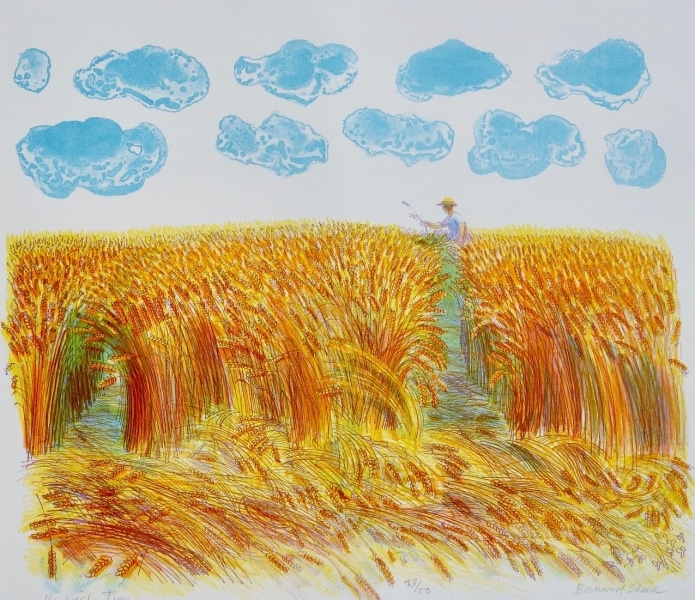The Artist’s Resale Right (ARR) is a legal entitlement for the creators of original works of art to benefit from a royalty each time their work is resold through an auction house or other secondary market. It’s essentially a copyright similar to the rules that apply to the authors of literary or musical works.
How the ARR works
The AAR was introduced into UK law in 2006 for living artists who make works such as paintings, sculptures, photographs and ceramics. It enables creators to benefit from the increasing value of their work on the secondary market, and is applicable when the sale price reaches or exceeds £1,000.
The royalties are calculated on a sliding scale and are capped at a maximum of £12,500. In January 2012, the right was extended to include the estates of deceased artists. The right lasts for the duration of the artist’s lifetime, and for 70 years after their death.
The ARR is applicable to creators who are UK, European Economic Area (EEA), or Australian nationals. The work must be sold within these areas through an art market professional such as an auction house, gallery, or art dealer. It does not include works that were bought directly from the creator or sold in a private sale.
In the UK, ARR is managed by DACS (Design and Artists Copyright Society) and ACS (Artists’ Collecting Society). These organisations collect and distribute royalties to artists or their estates.
Issues and challenges
Many will argue that legislation such as the ARR is the lifeblood of the UK creative industry. It also supports the wider visual arts economy, such as materials suppliers and bespoke framing shops. Life as a practicing artist can be precarious, involving a lot of sacrifice and financial uncertainty, and a steady income can rarely be guaranteed.
However, some critics argue that the threshold of £1,000 is too low, and may discourage galleries or dealers from selling works by new and emerging artists who cannot yet command a high premium for their works.
Others feel that the system is unfairly skewed in favour of established artists who can command higher prices, and therefore bigger royalties, for their work. Some artists are not aware of the AAR or do not fully understand how it works, so they may fail to register with DACS or ACS, and miss on the payments they are entitled to.
New agreement for works re-sold in New Zealand
Until December 2024, the AAR did not apply to works by British artists that were resold in New Zealand. The law has now been amended following a Free Trade Agreement to include New Zealand in the AAR, providing a vital lifeline for many visual artists, who often rely on royalties to pay for their materials and living expenses.
According to the press release from the Intellectual Property Office, UK artists exported about £2 million worth of artworks to New Zealand in 2021, and 80 per cent of artists rely on royalties from resales, earning an average of £5,000 per year.
Since the ARR was first introduced in 2006, over £120 million has been paid in royalties to UK artists or their beneficiaries. The new agreement will help thousands more emerging artists to establish their careers and have a fair financial benefit from their work.
Trade Minister Douglas Alexander said: “Resale royalties are an important income stream for our talented British artists, helping them continue to produce art and showcase it in homes and galleries around the world.”
He added: “It’s welcome news that, under the terms of our trade deal, they will now also be able to claim royalties when their art is resold in New Zealand. With UK art exports to New Zealand reaching over £8 million between 2016 and 2021, this new arrangement will help boost the income of our world-class creatives.”
The final word
Whatever the current flaws in the system may be, it is generally agreed that artists benefit from initiatives such as ARR. They can help artists to achieve financial stability, allowing them to develop their talents and experience.
This ultimately benefits society as a whole, adding to the cultural richness and diversity of the arts scene and avoiding dominance by wealthier citizens who have independent financial means to support them.
